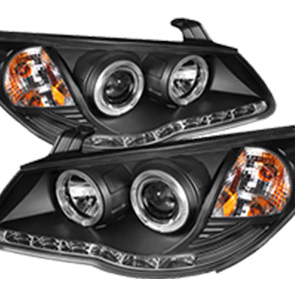Understanding the Components and Functionality of Derailleur Assemblies in Bicycle Gear Systems
Understanding the Derailleur Assembly An In-Depth Look
The derailleur assembly is a crucial component of modern bicycles, particularly those designed for road cycling and mountain biking. It serves the important function of shifting gears smoothly, allowing riders to adapt to a variety of terrains and conditions. In this article, we will explore the design, functionality, and importance of derailleur assemblies, as well as maintenance tips to ensure longevity and optimal performance.
The Basics of Derailleurs
In essence, a derailleur is a device that guides the chain from one gear to another on a multi-speed bicycle. The term derailleur comes from the French word meaning to derail, aptly describing how the mechanism directs the chain off one cog and onto another. There are two primary types of derailleurs the front derailleur, which moves the chain between the chainrings connected to the pedals, and the rear derailleur, which shifts the chain between the sprockets on the rear wheel.
Components of a Derailleur Assembly
A derailleur assembly consists of several key components
1. Cage The cage holds the chain and is the part that actively moves to shift the chain onto different gears. The cage is typically made of lightweight materials, such as aluminum or composite, to minimize overall bike weight.
2. Jockey Wheels Found at the bottom of the rear derailleur cage, these small wheels guide the chain tautly and smoothly. They are crucial for maintaining chain tension and ensuring smooth shifting.
3. Mounting Bracket This component attaches the derailleur to the frame of the bicycle. The design can vary, and it is essential that the derailleur is securely mounted for optimal performance.
4. Spring Mechanism A spring mechanism provides tension to the derailleur, allowing it to return to its original position after shifting the chain. This tension is vital for accurate and responsive shifting.
5. Limit Screws These screws help to set the boundaries of the derailleur's movement, preventing the chain from shifting beyond its intended cogs or chainrings.
How the Derailleur Works
The operation of a derailleur is relatively straightforward yet highly engineered. When the rider clicks the gear shifter (typically located on the handlebars), it activates a cable that pulls or releases the derailleur’s mechanism. For the rear derailleur, pulling the cable moves the derailleur to one side, guiding the chain from one sprocket to another. The combination of the rider's input, cable tension, and the derailleur's spring mechanism ensures seamless transitioning between gears.
derailleur assembly

The front derailleur works in much the same way, but it shifts the chain between the larger and smaller chainrings. This allows cyclists to optimize their pedaling efficiency based on the terrain, whether climbing a steep hill or sprinting on a flat surface.
Importance of the Derailleur Assembly
The derailleur assembly significantly enhances a cyclist's experience. It enables easier transitions between various gears, which is vital for maintaining an efficient pedaling cadence. Properly functioning derailleurs are essential not only for performance but also for a rider's safety. Malfunctioning derailleur mechanisms can lead to chain slips or jams, potentially causing accidents.
Maintenance Tips
Maintaining the derailleur assembly is crucial for ensuring its longevity and effectiveness. Here are some practical tips
1. Regular Cleaning Dirt and grime can accumulate on and around the derailleur, impacting its performance. Regular cleaning will help maintain smooth operation.
2. Lubrication Keep the jockey wheels and chain adequately lubricated to reduce friction and ensure smooth shifting.
3. Cable Inspection Regularly check the gear shifting cables for frays or damage. Worn cables can lead to poor shifting performance.
4. Adjustment Checks Periodically check the derailleur limits and adjust the limit screws if necessary. This can prevent the chain from overshifting and can prolong the life of the drivetrain.
5. Professional Servicing If you're unsure about making adjustments or repairs, consult with a professional bike mechanic. They can provide expert advice and servicing to keep your derailleur functioning optimally.
Conclusion
In summary, the derailleur assembly is a fundamental aspect of modern cycling, significantly enhancing performance and rider safety. Understanding its components and how they work can empower cyclists to take better care of their bicycles, ensuring a smooth and enjoyable ride for years to come.
-
Upgrade Your Control with Premium Throttle CablesNewsAug.08,2025
-
Stay in Control with Premium Hand Brake CablesNewsAug.08,2025
-
Experience Unmatched Performance with Our Clutch HosesNewsAug.08,2025
-
Ensure Safety and Reliability with Premium Handbrake CablesNewsAug.08,2025
-
Enhance Your Vehicle with High-Performance Clutch LinesNewsAug.08,2025
-
Elevate Your Ride with Premium Gear CablesNewsAug.08,2025
